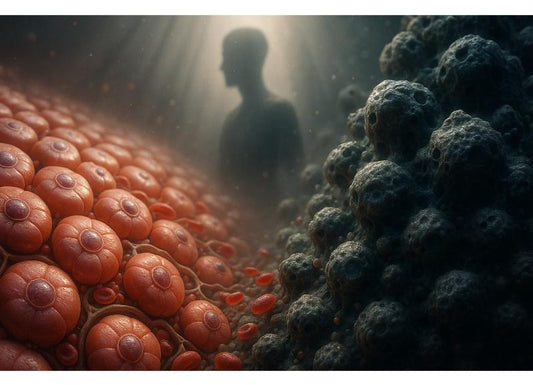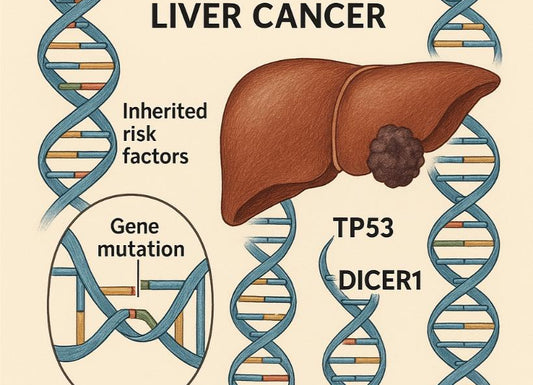How to Lower Liver Enzymes: Practical Steps to Support Liver Health
 Written By
Abel Tamirat, MD
Written By
Abel Tamirat, MD

Elevated liver enzymes often signal inflammation or stress in the liver. While occasional spikes can occur from mild illness, strenuous exercise, or short-term medication use, persistently high liver enzymes may point to ongoing liver injury.
The good news? Many causes of elevated liver enzymes can be reversed through lifestyle changes, medical management, and consistent monitoring.
This article explains what causes high liver enzymes, how to lower them safely, and what steps you can take to protect your liver long-term.
Understanding Liver Enzymes
The liver produces several enzymes that play key roles in metabolism and detoxification. The most commonly measured are:
-
ALT (Alanine Aminotransferase): Rises when liver cells are damaged.
-
AST (Aspartate Aminotransferase): Increases with liver or muscle injury.
-
ALP (Alkaline Phosphatase): Linked to bile duct or bone conditions.
-
GGT (Gamma-Glutamyl Transferase): Often elevated with alcohol use or bile duct problems.
High levels of these enzymes usually suggest liver inflammation, fatty buildup, or injury.
Read on in our full guide to at-home liver tests to learn what your results really mean.
Common Causes of Elevated Liver Enzymes
1. Fatty Liver Disease
-
The most frequent cause of high liver enzymes.
-
Can be related to obesity, insulin resistance, or excessive alcohol use.
2. Alcohol Consumption
-
Even moderate drinking can raise enzyme levels, especially GGT and AST.
-
Chronic use increases the risk of cirrhosis and liver failure.
3. Medications and Supplements
-
Acetaminophen, statins, certain antibiotics, and herbal products like kava or comfrey can strain the liver.
4. Viral Hepatitis (A, B, C)
-
Causes inflammation and cellular injury, elevating ALT and AST.
5. Obesity and Metabolic Syndrome
-
High cholesterol, diabetes, and central obesity contribute to fat accumulation in liver cells.
6. Autoimmune and Genetic Disorders
-
Conditions such as autoimmune hepatitis, hemochromatosis, and Wilson’s disease can raise enzyme levels.

How to Lower Liver Enzymes Naturally
Lowering liver enzymes starts with treating the underlying cause and supporting liver function with healthy habits.
1. Stop Drinking Alcohol
Even small amounts of alcohol can irritate the liver. Abstaining completely allows liver cells to heal and enzyme levels to normalize.
2. Eat a Liver-Friendly Diet
Focus on nutrient-rich, unprocessed foods that reduce inflammation and improve liver metabolism.
Best foods for liver repair:
-
Leafy greens (spinach, kale, collard greens).
-
Cruciferous vegetables (broccoli, cauliflower).
-
Whole grains (brown rice, oats, quinoa).
-
Lean proteins (fish, tofu, legumes).
-
Healthy fats (avocados, olive oil, walnuts).
-
Fresh fruits (berries, citrus, apples).
Limit or avoid:
-
Fried or greasy foods.
-
Added sugars and refined carbs.
-
Processed meats.
-
Excessive salt.
Read on to explore our complete guide to at-home kidney function testing and how it works.
3. Maintain a Healthy Weight
Even modest weight loss (5–10% of body weight) can significantly reduce fat accumulation in the liver and lower enzyme levels.
Combine calorie control with consistent physical activity for gradual, sustainable results.

4. Exercise Regularly
Aim for at least 150 minutes per week of moderate activity, such as walking, swimming, or cycling. Exercise improves fat metabolism, insulin sensitivity, and liver function.
5. Stay Hydrated
Water supports the liver’s detoxification processes and helps flush toxins from the bloodstream. Avoid sugary beverages and limit caffeine.
6. Manage Medications Wisely
Talk with your doctor before starting or stopping medications. Avoid self-medicating with herbal supplements, which can sometimes worsen liver damage.
7. Control Blood Sugar and Cholesterol
High blood sugar and triglycerides can lead to fatty liver. Managing these with a balanced diet and prescribed medications helps protect liver cells.
8. Support Liver Repair with Key Nutrients
Certain vitamins and compounds may aid liver recovery:
-
Vitamin E: Reduces inflammation in fatty liver disease.
-
Milk thistle (silymarin): May support cell regeneration.
-
Coffee: Moderate intake is associated with lower liver enzyme levels.
-
Green tea: Contains antioxidants that help reduce fat and oxidative stress.
Always consult your healthcare provider before starting supplements.
Medical Treatments for Elevated Liver Enzymes

If lifestyle changes are not enough, your doctor may recommend treatments based on the cause:
-
Antivirals: For hepatitis B or C.
-
Immunosuppressants: For autoimmune hepatitis.
-
Chelation therapy: For iron or copper overload.
-
Medication review: Adjust or discontinue drugs that harm the liver.
In more advanced cases, imaging or a liver biopsy may be performed to assess damage.
Read on in our UTI testing guide to better understand symptoms and treatment.
How Long Does It Take to Lower Liver Enzymes?
The time frame varies by cause:
-
Fatty liver: 2–6 months of consistent diet and exercise.
-
Alcohol-related elevation: 1–2 months of abstinence can show improvement.
-
Medication-related: Levels normalize once the drug is discontinued.
Patience and consistency are key — gradual improvement indicates recovery.
When to See a Doctor
You should see a healthcare provider if you experience:
-
Persistent fatigue or weakness.
-
Yellowing of skin or eyes (jaundice).
-
Dark urine or pale stools.
-
Unexplained weight loss.
-
Swelling in the abdomen or legs.
Your doctor may order repeat blood tests or imaging to track your progress and rule out serious conditions.
Read on in our article about glucose in urine to learn about causes and symptoms.
The Bottom Line
High liver enzymes are often an early sign that your liver needs care — not a sign of irreversible disease. By avoiding alcohol, eating a balanced diet, exercising regularly, and monitoring your medications, you can help your liver heal and restore normal enzyme levels.
Your liver is resilient — with the right care, it can regenerate and continue performing its vital functions for years to come.
Want to check your liver health from home?
You can take an at-home liver enzyme and metabolic health test through Ribbon Checkup and get results in days.
Related Resources
-
Liver Pain Location: Understanding Its Causes and Symptoms – Spot the main causes and symptoms.
-
What Can Be Mistaken for Liver Pain? – Conditions that mimic liver discomfort.
-
Gallbladder Pain vs. Liver Pain – How to tell them apart.
References
Mayo Clinic Staff. (n.d.). Elevated liver enzymes: Definition. Mayo Clinic. Retrieved August 4, 2025, from https://www.mayoclinic.org/symptoms/elevated-liver-enzymes/basics/definition/sym-20050830
Mayo Clinic Staff. (n.d.). Elevated liver enzymes: Causes. Mayo Clinic. Retrieved August 4, 2025, from https://www.mayoclinic.org/symptoms/elevated-liver-enzymes/basics/causes/sym-20050830
Cleveland Clinic. (n.d.). Elevated liver enzymes. Retrieved August 4, 2025, from https://my.clevelandclinic.org/health/symptoms/17679-elevated-liver-enzymes
Lala, V. (2023). Liver function tests. In StatPearls. NCBI Bookshelf (NIH). https://www.ncbi.nlm.nih.gov/books/NBK482489/
Kalas, M. A., Htike, Z., & Reddy, K. R. (2021). Abnormal liver enzymes: A review for clinicians. World Journal of Hepatology, 13(11), 1688–1698. https://pubmed.ncbi.nlm.nih.gov/34904038/
Thoma, C., Day, C. P., & Trenell, M. I. (2012). Lifestyle interventions for non-alcoholic fatty liver disease: A systematic review. Journal of Hepatology, 56(1), 255–266. https://pubmed.ncbi.nlm.nih.gov/21723839/
Ahmed, I. A. (2019). Lifestyle interventions for non-alcoholic fatty liver disease. Saudi Journal of Biological Sciences, 26(7), 1519–1524. https://pmc.ncbi.nlm.nih.gov/articles/PMC6864195/
Fernández, T., Viñuela, M., Vidal, C., & Barrera, F. (2022). Lifestyle changes in patients with non-alcoholic fatty liver disease: A systematic review and meta-analysis. PLoS ONE, 17(2), e0263931. https://pubmed.ncbi.nlm.nih.gov/35176096/

Dr. Abel Tamirat is a licensed General Practitioner and ECFMG-certified international medical graduate with over three years of experience supporting U.S.-based telehealth and primary care practices. As a freelance medical writer and Virtual Clinical Support Specialist, he blends frontline clinical expertise with a passion for health technology and evidence-based content. He is also a contributor to Continuing Medical Education (CME) programs.



